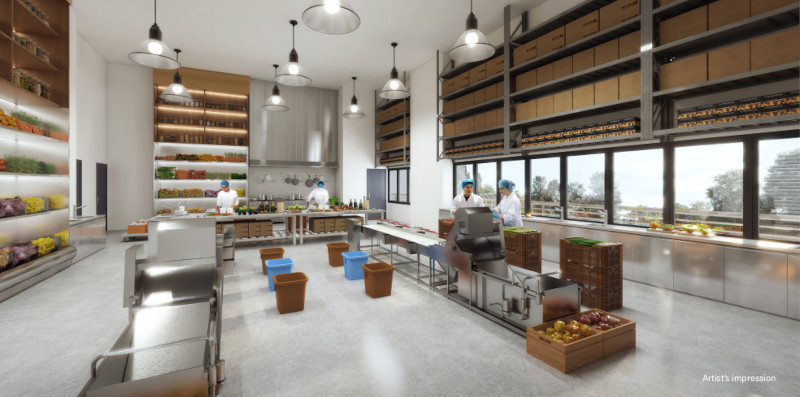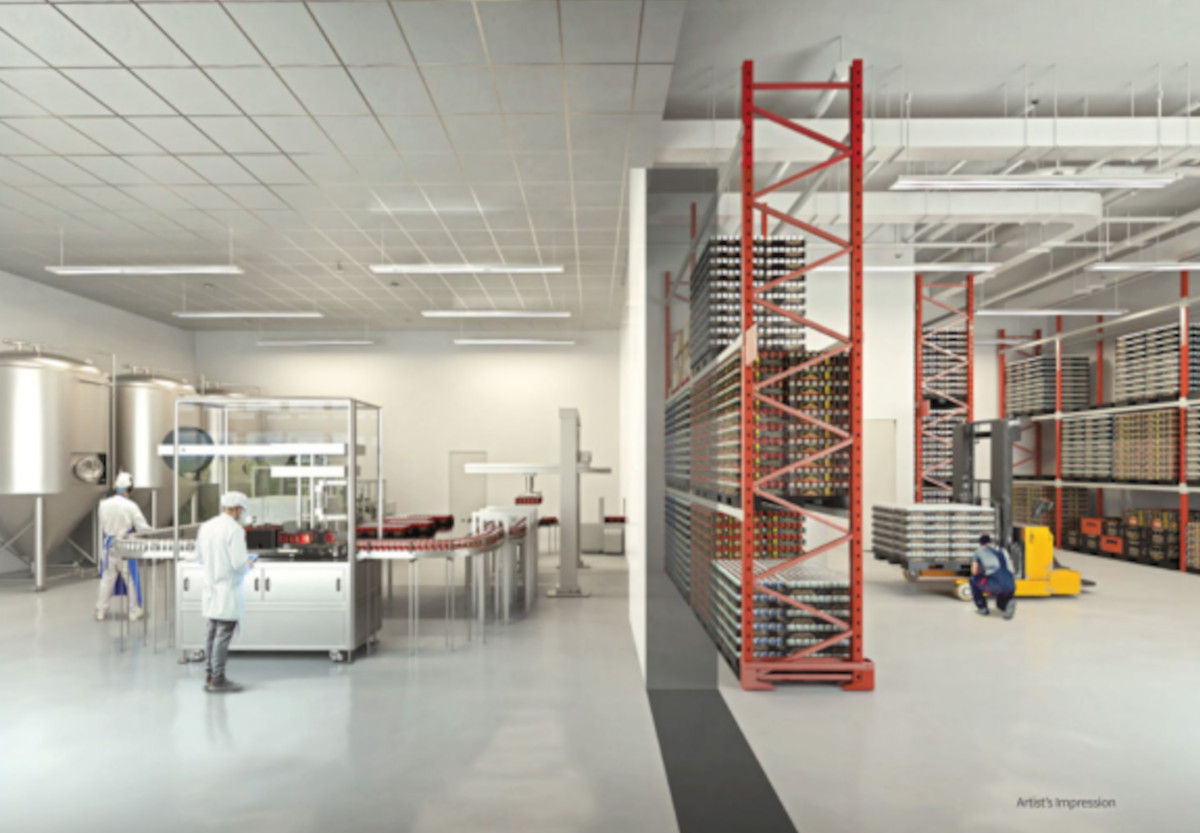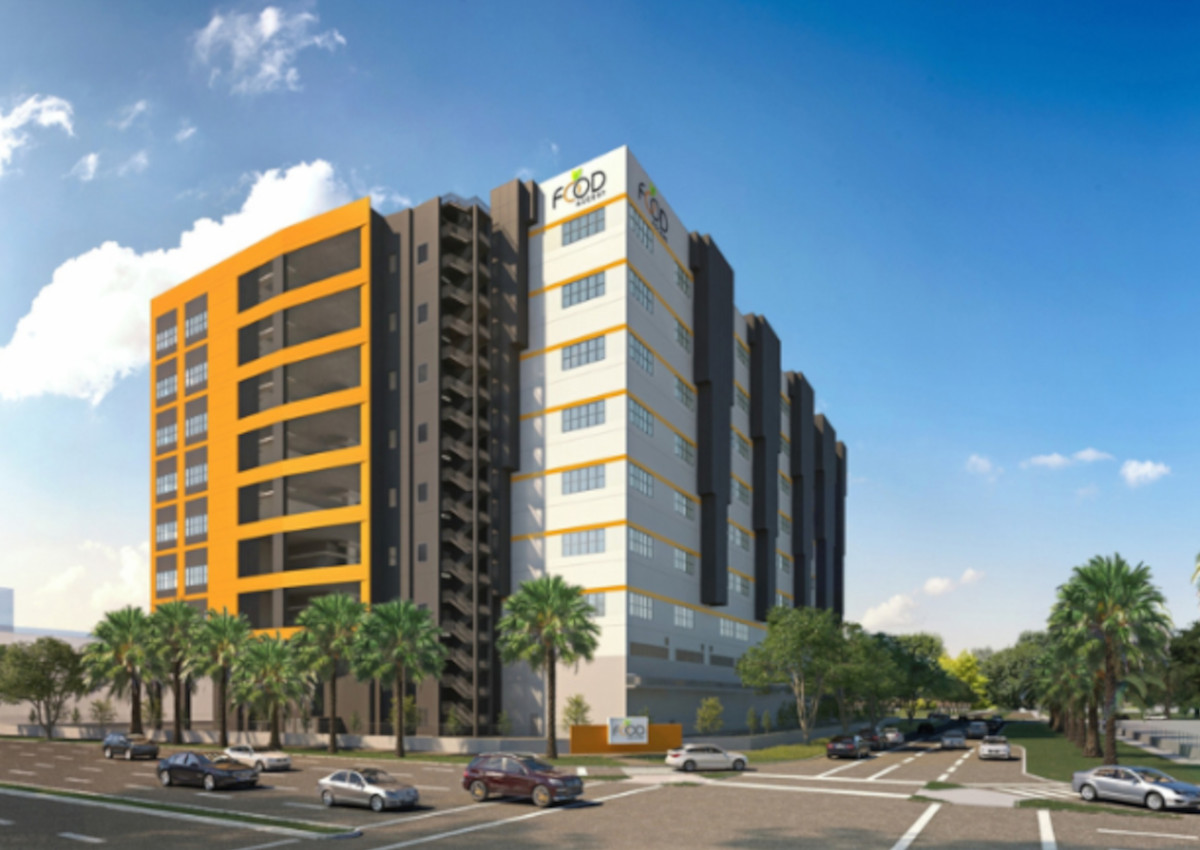
Singapore’s food and beverage industry is always changing. It adapts to new cooking, making, delivering, and supplying food. To keep up, businesses are exploring new ideas like cloud kitchens and food factories.
Food factories in the Agri-Food Innovation Park (AFIP) are crucial. They help Singapore aim to make 30% of its own nutrition by 2030. This boosts the nation’s food security.
The Rise of Food Factories in Singapore
Many F&B operators in Singapore are now moving to food factories, leaving behind old shops. These factories let them cook, process, package, and store food all in one spot.
This change is popular because the city lacks enough facilities. It helps businesses work better, cut costs, and keep up with more food delivery orders.
Food factories came about because businesses wanted to be more efficient. They put all their food tasks in one place, saving time and resources. This makes things run smoother.
Another big plus of food factories is they offer lots of storage space. This is something old shops don’t have. It means F&B operators can keep enough stock to meet their customers’ needs.
Also, these factories are great for businesses focusing on food delivery. With food delivery getting more popular, a central kitchen helps serve customers faster.
The food factory trend in Singapore is changing how food is done. It helps businesses overcome problems and meets the needs of customers who want food delivered. This shift is big for both F&B operators and consumers alike.
Meeting Singapore’s Future Food Needs
Singapore is making big moves to secure its food future. They aim to make 30% of their own food by 2030. This is known as the “30 by 30” target. To hit this goal, Singapore opened the Agri-Food Innovation Park (AFIP) in Sungei Kadut.
The AFIP is a big step forward. It sparks innovation in farming technology and draws in leading agritech companies. This effort is key to bringing up Singapore’s food production and supply chain.
By connecting to the Northern Agri-Tech and Food Corridor, AFIP ties together important food production areas. This move backs Singapore’s plan for sustainable and self-sufficient food production. With new technologies and teamwork, Singapore aims to meet its food needs and keep its people fed.
The Appeal of Food Factories for Investors

Food factories in Singapore are catching investors’ eyes as a distinct and profitable real estate choice. The residential property market’s cooling measures are turning savvy investors towards industrial assets, like food factories. Not being hit by Additional Buyer’s Stamp Duty (ABSD) makes food factories even more enticing.
Singapore’s food and beverage sector is growing steadily. This growth, along with the government’s push for better food security, boosts food factories’ investment appeal. As Singapore boosts its food manufacturing and processing industry, food factories stay in high demand.
Putting money into the food sector offers a chance to aid the nation’s food security and earn significant returns. With the population and urbanization on the rise, the need for food production and processing facilities grows. This makes food factories a highly sought-after investment in the industrial asset world.
The Unique Value of Food Ascent

Food Ascent is a top choice development in Tuas industrial zone. It’s a great spot for food companies to invest in Singapore’s food production heart.
The units at Food Ascent are designed with care. They meet different needs for cold room and kitchen work. These spaces are perfect for food and drink businesses wanting to grow.
Food Ascent gives a special chance for working together. It helps business owners get into Singapore’s booming food manufacturing market. With its great location and smart unit designs, Food Ascent is the best pick for companies aiming for efficiency and growth in the food sector.
Singapore’s Push for Food Security
Singapore knows it’s important to be less dependent on food from elsewhere. It wants to grow 30% of its food by 2030. This goal is part of the Singapore Green Plan 2030.
The country’s food industry is getting better with new technology. Since only 1% of land is for farming, they need to be smart. They use things like indoor farming with LED lights and fish farms that recycle water.
To cut down on imported food, Singapore is betting on technology and green farming. This will make their food supply more secure. It aims to build a strong, local food system.
Strategies to Support the Agri-Food Sector
The Singapore Food Agency (SFA) is working hard to transform the agri-food sector. They’re doing this by using various strategies. A key effort is the Agri-Cluster Transformation (ACT) fund. This fund helps improve skills, bring in new technology, and encourage innovation. With these investments, the sector can boost its productivity and sustainability. This ensures a bright future for Singapore’s food industry.
The SFA puts a big emphasis on making food production sustainable. It funds research projects that look into sustainable urban food production, future foods, and food safety. Supporting these projects helps the SFA spark innovation and find real-world answers. This improves the quality and safety of Singapore’s food.
Financial support isn’t the only focus. Teaming up with Institutes of Higher Learning is key for training a skilled agri-food workforce. These partnerships provide learning and training chances for locals. They help them gain the skills and knowledge needed for the agri-food sector. This way, Singapore can create a workforce that drives innovation and supports the industry’s growth.
The SFA uses a broad strategy to help the agri-food sector. By using the Agri-Cluster Transformation (ACT) fund, the focus is on sustainability, safety, and training skilled workers. Promoting sustainable food production and ensuring food safety are priorities too. By doing all this, Singapore aims to lead in the global agri-food market.
Outlook for Singapore Food Factory Market
The food factory market in Singapore looks very promising in the next few years. Several key factors, like growing food manufacturing and tech advancements, drive this positive trend. Also, how consumers choose food is changing.
The growth of the food factory market is fueled by an expanding food manufacturing sector. Singapore aims to be a food hub for the region. This means a higher demand for production facilities. Food factories offer the needed space and tools for businesses to meet this demand.
Technological progress is shaping the food factory market too. Automation, robotics, and new processing methods boost efficiency. These innovations help businesses keep up with the demand for convenience, quality, and eco-friendly products.
Consumer choices strongly influence the need for food factory spaces. People in Singapore want food that is convenient, healthy, and sustainable. Modern food factories can make and package foods that meet these needs.
The potential to grow into regional markets also supports the food factory market. Singapore is well-placed as a gateway to Southeast Asia. This position helps food businesses reach more customers and grow.
In summary, the future looks bright for Singapore’s food factory market. There’s a mix of industry growth, tech progress, shifting consumer habits, and regional opportunities. This all makes it a great time for businesses to invest and grow in this area.
The Importance of Food Security in Singapore
Ensuring food security is key for Singapore because it imports most of its food. The country has little agricultural land. This makes it prone to global market changes. Singapore aims to produce 30% of its own food by 2030. This goal will make its food supply more stable.
Singapore is improving its food sector to meet this goal. It’s investing in technologies like vertical farming. This helps make the most out of limited space. It also allows the growth of more crop types within the country.
It’s also using sustainable farming methods. These include water-saving irrigation and natural pest control. Such practices help the environment and ensure food production for the future.
Singapore is diversifying where it gets its food from too. It’s creating partnerships with stable food-producing countries. This lowers the risk of relying on a single source. It helps the country stand strong against natural disasters or political issues affecting food trade.
In conclusion, Singapore’s drive for food security is crucial. The focus is on local production, new technology, sustainable methods, and diverse food sources. These steps should help Singapore build a secure food system that’s ready for the future. This will help feed its people and lessen the impact of global challenges.
Innovation and Collaboration in the Food Industry
Singapore’s food industry is pushing forward with innovation and teamwork. They’re meeting new consumer demands and helping create sustainable food. Innovative practices and technologies are essential for this sector’s future.
By investing in plants for alternative proteins and food-tech facilities, the industry is getting creative. These efforts are key for sustainable food and important for our planet.
FoodPlant is a big player in this, supporting the creation of new products. It also helps build bigger factories for food manufacturing. This boosts the food industry’s growth in Singapore.
Food and drink companies, schools, and the government are also joining forces. Together, they share resources and ideas to solve big food challenges. This teamwork leads to innovative solutions.
This way of working together makes a friendly environment for food businesses to grow. It encourages sustainable ways of making food. This helps make sure Singapore’s food industry can keep making a difference for our planet.
Innovation and cooperation are the gears moving Singapore’s food sector ahead. They make sure Singapore stays a leader in tasty foods and caring for the earth.
Capitalizing on Market Potential
Singaporean companies are set to benefit from the growing food market in Asia. They predict food spending will double by 2030, offering a big chance for F&B businesses. To help this, Enterprise Singapore is promoting new ideas like cloud kitchens.
These steps aim to increase demand for food factories. This will give F&B companies the facilities they need. They can then meet the upcoming market demand.
Singapore offers a good environment and support for F&B companies to succeed. These advantages allow companies to grow in Singapore and look into new markets. Singapore’s prime location and infrastructure make it a top choice for expanding F&B businesses in the area.
For F&B companies wanting to grow, being able to change and innovate is key. They should use new tech, focus on sustainable food making, and watch consumer trends closely. This approach will help them do well in the fast-changing and tough F&B market.
Be Part of the Lucrative Food Factory Market
The evolution of the Singapore Food Factory is a journey towards innovation, teamwork, and eco-friendliness. Singapore aims to boost food security and reach its “30 by 30” goal, raising the need for more food factories. The industry’s growth is fueled by new technology, changing tastes, and the potential in nearby markets, making the future look bright.
For success, Singapore Food Factories must keep up with trends and embrace new food ideas. They need to stay updated with tech and green practices. This way, they can provide a steady and safe food supply for everyone.
Singapore’s investment in agriculture and food and working together with others are key. Food factories will be crucial in meeting future food demands and cutting down on food imports. The success of the Singapore Food Factory market depends on seizing these chances to grow and help ensure Singapore’s food security.

